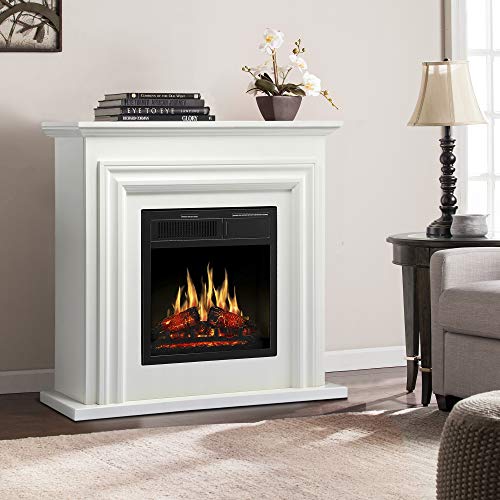Freestanding Stoves for Sale: The Ultimate Guide
Freestanding stoves, also understood as standalone stoves, are an increasingly popular choice for house owners looking to enhance the heating efficiency and aesthetic appeal of their home. They come in a myriad of styles, sizes, and fuel choices, providing versatility to meet the varied requirements of consumers. This post explores various elements of freestanding stoves, including their advantages, types, and features, together with a guide to buying the ideal stove.
What is a Freestanding Stove?
A freestanding stove is a heating appliance that is not built into a wall or cabinets. Instead, it stands individually in a space and can be placed in different areas, making it a versatile heating solution. Fireplaces can use various fuels, such as wood, gas, or pellets, and are created to offer heat while improving the ambiance of an area.
Advantages of Freestanding Stoves
Freestanding stoves are favored for numerous reasons:
- Heating Efficiency: Freestanding stoves can generate considerable heat output while being fuel-efficient.
- Visual Appeal: With various styles ranging from traditional to contemporary, they can be a focal point in any room.
- Setup Flexibility: They can be positioned in diverse areas, enabling simple integration into existing home designs.
- Cost-Effective: Many freestanding stoves are cheaper to set up compared to built-in systems.
- Heat Distribution: They can effectively distribute heat through the convection process, heating up the surrounding area.
Kinds Of Freestanding Stoves
Freestanding stoves come in different types based upon their fuel source, consisting of:
| Type | Description |
|---|---|
| Wood Stoves | Usage traditional wood logs for fuel, using a rustic appeal and an unique atmosphere. |
| Gas Stoves | Run utilizing natural gas or gas, offering hassle-free and manageable heating. |
| Pellet Stoves | Utilize compressed wood pellets as fuel, understood for their efficiency and eco-friendliness. |
| Electric Stoves | Usage electrical energy as a power source, offered in different styles, often including modern styles. |
Secret Features to Consider
When looking for a freestanding stove, a number of functions must be considered:
- Heat Output (BTUs): Consider the size of the area you wish to heat and choose a range with a suitable BTU rating.
- Size and Design: Ensure the range fits the area and complements the space's design.
- Fuel Type: Decide on the most hassle-free and affordable fuel type for your family.
- Efficiency Ratings: Look for the range's efficiency rankings (like EPA accreditation for wood stoves) to ensure you're making an eco-friendly choice.
- Security Features: Consider models with safety features such as vehicle shut-off, heat resistant glass, or low-clearance choices.
Acquiring a Freestanding Stove
When thinking about purchasing a freestanding range, it is important to assess a number of important factors to guarantee you invest wisely:
1. Budget
Setting a clear budget plan is vital when looking for a freestanding range. Costs can differ widely based on the type, brand, and functions:
- Basic Models: ₤ 800 - ₤ 1,500
- Mid-Range Models: ₤ 1,500 - ₤ 3,000
- High-End Models: ₤ 3,000 - ₤ 6,000+
2. Research Brands and Models
Thorough research study can assist you reveal numerous options in the market. Some significant brands in the freestanding stove market consist of:
- Jøtul
- Quadrafire
- Regency
- Lopi
- Harman
3. Speak with Reviews
Read consumer reviews and professional ratings online to acquire insights into the performance and reliability of different designs.
4. Regional Regulations
Check regional structure codes and policies relating to stove installation, especially for wood and gas stoves, to guarantee compliance.
5. Setup
Consider professional setup, especially for gas or wood designs, as they typically require unique ventilation or flue systems.
Frequently Asked Questions About Freestanding Stoves
1. Are freestanding stoves safe to use?
Yes, when appropriately set up and kept, freestanding stoves are safe. Nevertheless, it's essential to follow the manufacturer's standards and local codes.
2. How do I maintain my freestanding stove?
Regular maintenance consists of cleaning the flue or chimney, looking for clogs, and ensuring all components are working correctly. Yearly examinations by a licensed service technician are advised.
3. Can I utilize a freestanding range as a main heating source?
Yes, many property owners use freestanding stoves as main heating sources, especially in areas where traditional heating may be limited.
4. Are freestanding stoves energy-efficient?
Numerous more recent models are developed for high efficiency, providing better heat retention and lower emissions compared to older models.
5. What is the average life-span of a freestanding stove?
With correct maintenance, the average lifespan of a premium freestanding stove can be around 15 to 20 years.
Freestanding stoves are a useful and trendy alternative for heating homes. By understanding the various types, benefits, and features available, house owners can make educated choices that suit their choices and heating requirements. Whether opting for a wood, gas, pellet, or electric range, purchasing a quality design will supply heat, ambiance, and fulfillment for lots of years to come.

